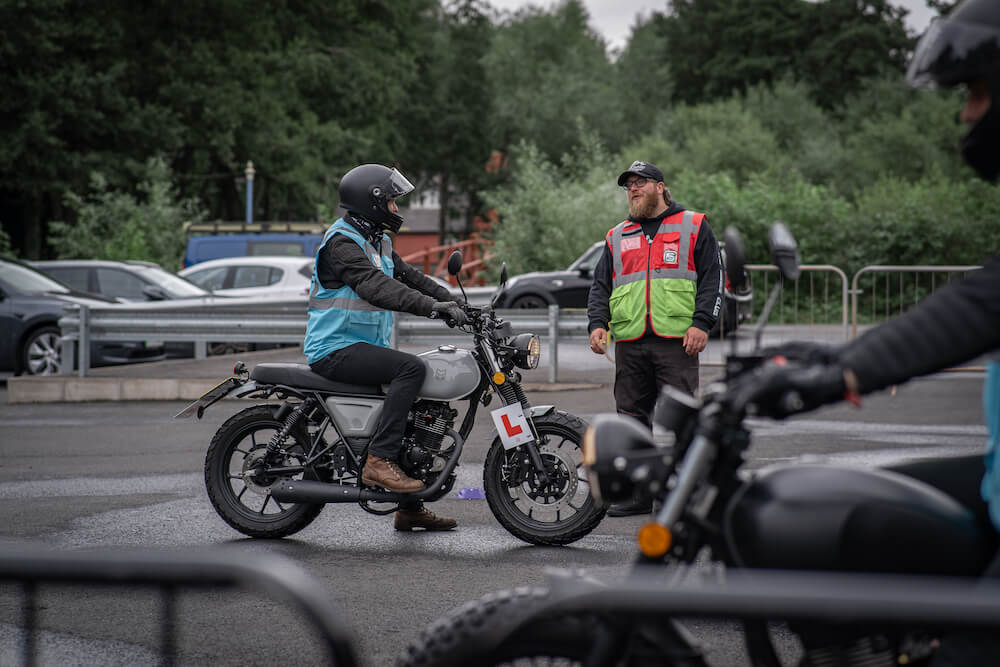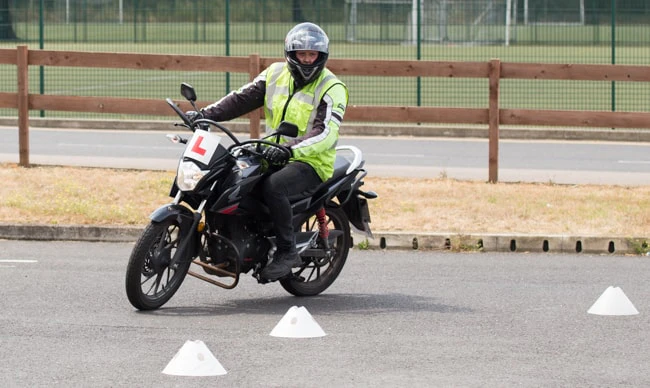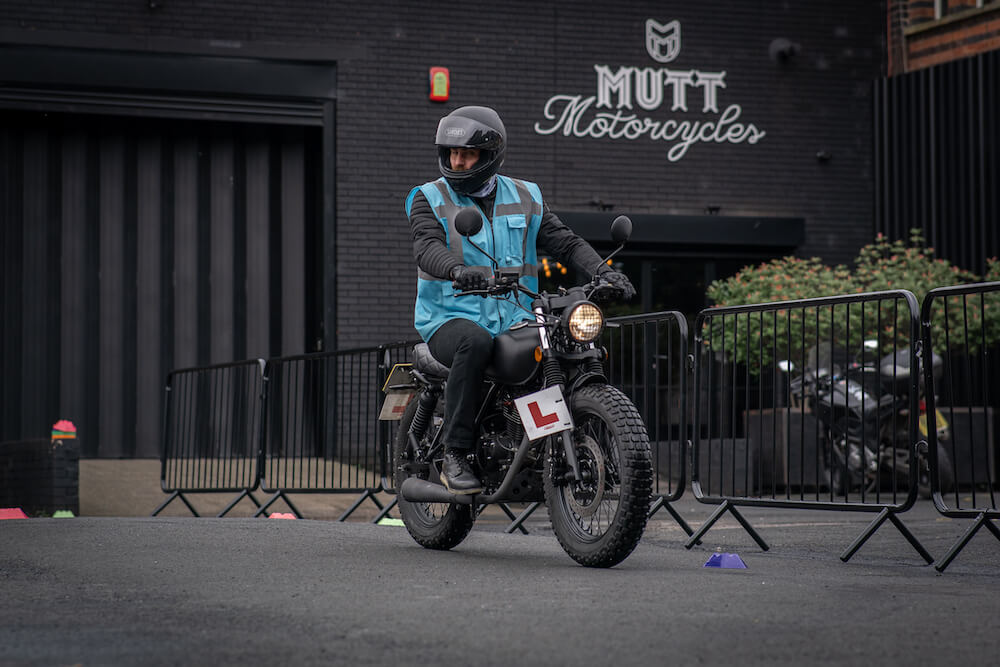back to the blog
What is a CBT Test?

Tom Baker · September 06, 2024
The Compulsory Basic Training (CBT) is a mandatory course you have to complete before riding a moped or motorcycle on public roads in the UK. The training includes both ‘pad’ training (an off-road practice area, such as a car park) and on-road training.
Put simply, a CBT is the first step to riding motorcycles on roads. The training gives you the basic skills and knowledge needed to be able to ride your motorcycle safely on public roads.
What is a CBT test exactly?
The CBT is designed for anyone looking to ride a small scooter or motorcycle up to 125cc. It covers all the basics from handling a bike, road riding theory and the practical skills of riding.
You might have seen the terms ‘CBT test’ and ‘CBT training’ and wonder if there’s a difference between the two. A lot of people will use these terms interchangeably because they refer to the same thing, but a CBT isn’t technically a test in that you can’t pass or fail.
There are testing elements to the training, though. It’s the instructors job to make sure you are able to ride safely, so if there’s a section of the training where they feel you’re not at a satisfactory level, you won’t be able to continue to the next section and you’ll need to book further training.
For most people, the training day will be the first time they’ve ever been on a moped or motorbike, so it may take them more than a day to get comfortable with balance, clutch control and steering. This is not at all uncommon, and we offer a Peace of Mind Policy add-on to all our CBT bookings so riders can get their second training day free if they need more practice.
 Is anyone exempt from having to take a CBT?
Is anyone exempt from having to take a CBT?
There are some instances where someone won’t need a CBT, including if you:
- Want to ride a motorcycle and have a full moped license from passing a moped test since 1 December 1990.
- Want to ride a moped (up to 50cc) and passed your car driving test before 1 February 2001.
- Have a full motorcycle license for one category and want to upgrade to another.
- Live and ride on certain offshore islands.
- Want to ride a trial e-scooter.
If you’re not sure if you need to take a CBT, contact us on web chat and we will talk you through booking the correct course.
What does the CBT test consist of?
A CBT test training consists of 5 parts of training that is progressively completed through the day.
Element A consists of an introduction and eye test. This involves all the basics of motorcycling, and everything you need to know for the day. Make sure to bring your glasses or contact lenses if you wear them as you will need to read a registration plate at a distance of 20 meters. This also includes :
- Objectives of completing the CBT test
- Reinforcing your understanding of the Highway Code to a good level
- Understanding the importance of using good motorcycle equipment and clothing
- Understanding the legal requirement to riding
Element B is onsite training where you learn in depth the various controls on a motorcycle and how to use them. This includes :
- Familiarity with the different motorcycle or scooter controls.
- Using the motorcycle stands to safely park your bike
- Demonstrating proper balance and bringing the motorcycle to a complete stop.
- Carrying out basic maintenance checks
- Starting and stopping the engine

Element C is on site riding where you will be taught practical riding skills using useful manoeuvres around your training grounds. This includes :
- Riding in a straight line
- Riding in a slow and controlled manner
- Using both brakes
- Changing gears
- Riding a figure of eight
- Carrying out emergency braking
- Carrying out U-turns
- Carrying out rear observation
- Riding out bends safely
Element D is on road training where you will be briefed on good practices for on road riding and how to minimise the risk of the various dangers facing learner riders. This includes :
- Your visibility on the road
- Riding at the correct speeds, road positioning and distance between other vehicles according to traffic and road conditions.
- Using rear observation
- Learning to anticipate danger and riding defensively.
Element E is the final element of the CBT test course and is where you will demonstrate your ability to ride safely on the road. This includes :
- Navigating junctions, roundabouts, pedestrian crossings, bends, obstructions and traffic light to a good level.
- Your ability to independently ride
You must be also be able to complete the following exercises :
- Carrying out a U-turn
- Emergency braking and bring the motorcycle to a complete stop.
Do I have to do anything else besides a CBT test before I can ride a 125cc bike?
No, all you have to is complete your CBT training and demonstrate that you have the ability to be a safe rider on the road. Once you have a CBT certificate, you can ride a bike of up to 125cc with L plates. At this stage you also have option of completing your AM, A1, A2 or full A-licence so be sure to research the different motorcycle licence types.

Can I do a CBT with no experience?
Yes, you can take CBT training with no prior experience. But, you will need to have a good working knowledge of the UK Highway Code and road signs. At RideTo, we regularly have inexperienced riders successfully complete their CBT and earn their certificate on their first attempt.
What do I need to take the CBT test?
With RideTo, the price of CBT test training includes the motorcycle hire, equipment and insurance. All you must have is a valid UK licence, either a full driving licence or a provisional licence. If you have a European licence, you must complete a D9 Form to register a non-GB driving licence with the DVLA.
Other than that, you need to wear suitable clothing for motorcycle training, and bring a positive attitude to learn!



